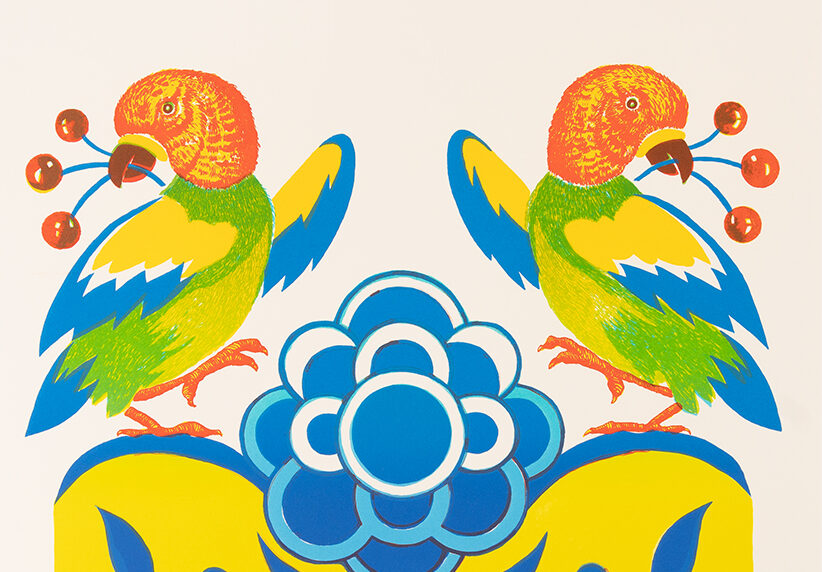Rita Vargas’ exhibition, “Cracked Open: Echoes of a Strange Fruit,” invites viewers to explore transformation—a non-linear journey through time, identity, and belonging. Her artistic process evolves continually, intertwining raw materials, thoughts, and emotions into a search for grounding and self-discovery.
As a foreign artist navigating unfamiliar, or almost familiar, landscapes, Vargas often finds herself fragmented—caught between cultures, sometimes feeling unseen. The exhibition title reflects that vulnerability: being exposed while carrying the weight of unheard voices. By using cracked cork tree bark, Vargas makes a personal and symbolic choice, representing the search for home—even when that concept feels elusive: “Until when can I search for the right meaning of home?”
The choice of cork bark is rooted in Vargas’ childhood memories of the Portuguese landscape. Cork trees, marked with white numbers on their sienna bare trunks, symbolize resilience and transformation. The material itself—light, water-resistant, and regenerating—mirrors her journey of growth and adaptation, even when faced with external challenges. It becomes a metaphor for shedding layers, growing, and adapting, despite the scars: “Just as the cork tree renews its bark in a natural seven-year cycle, so too does the human experience—the sense of self and identity—possess the capacity to transform. This transformation is not only a means of protection or isolation from external aggressions but also an opportunity for growth into a new being. In the same way, the bark cracks in unexpected ways and grows irregularly, always adapting to new directions as they emerge, converging into evolving shapes.”
Vargas’ practice reflects a rich cultural tapestry, shaped by the Italian, Portuguese, French, and Dutch Renaissance, Japanese traditions, and sixteen years of work and life in Finland. The artist draws inspiration from masters like Dürer, Rubens, and Van Dyck, valuing intimacy, nostalgia, the condition of motherhood, and playfulness as a call for joy. These influences coexist with themes of belonging and displacement, forming a layered narrative.
In a predominantly Lutheran society, where visual representation in places of faith is more contained, Vargas embraces the contrast between her abstract, colourful, playful motifs and the more monotonic visual culture around her. Rather than conforming or seeking approval, she proposes coexistence—a dialogue between diverse visual traditions.
Through printmaking techniques such as lithography, etching, photopolymer gravure, silkscreen print, woodcut, photography, and collage, Vargas layers histories and identities, unearthing truths that might otherwise remain hidden. Printmaking becomes a medium to explore the outsider’s experience—visible yet often overlooked. With this exhibition, Vargas hopes to offer viewers a space to reflect on their own sense of belonging and the universal human desire to be seen and understood.

 Suomi
Suomi Svenska
Svenska